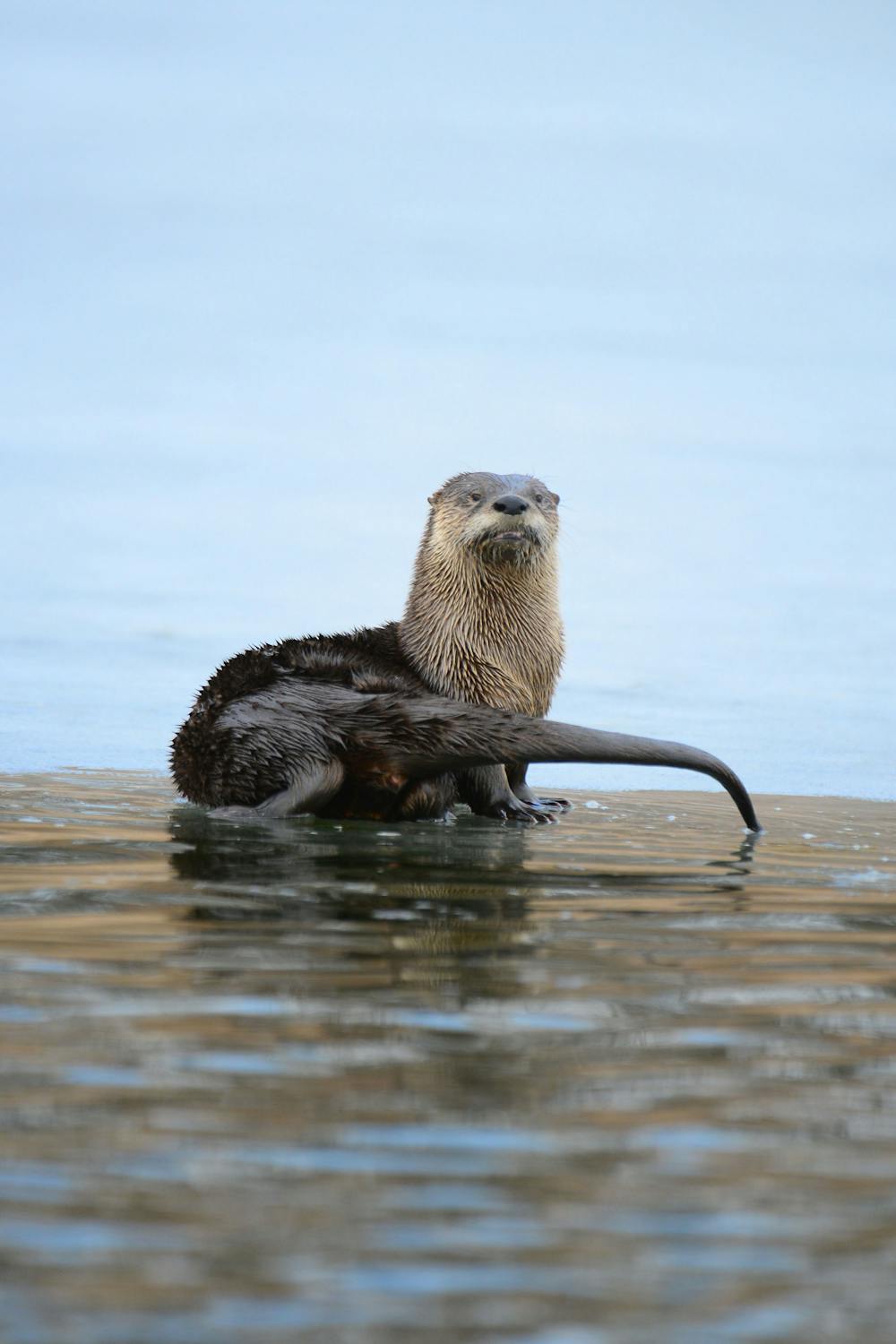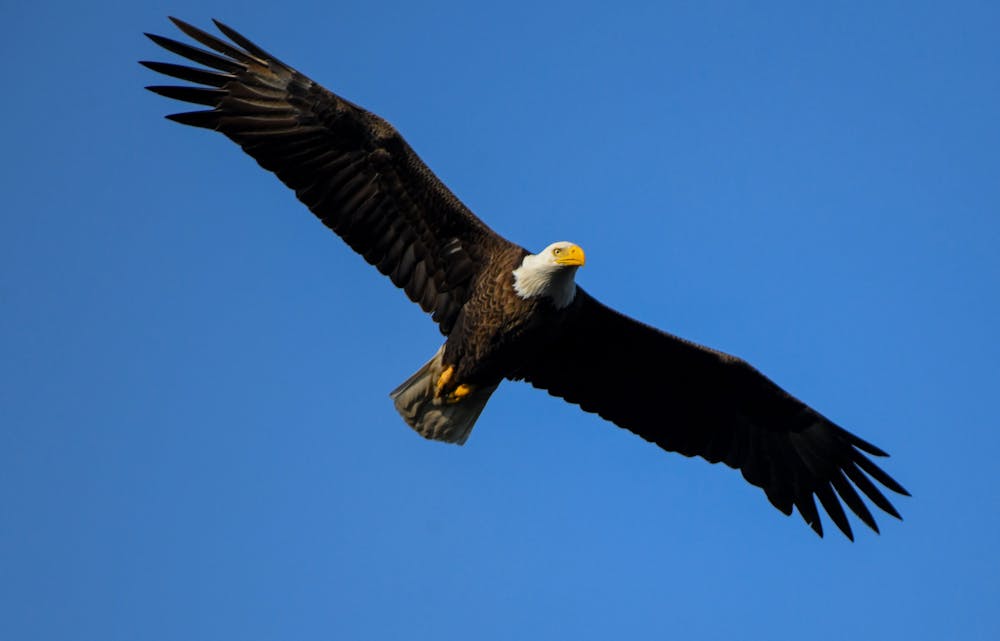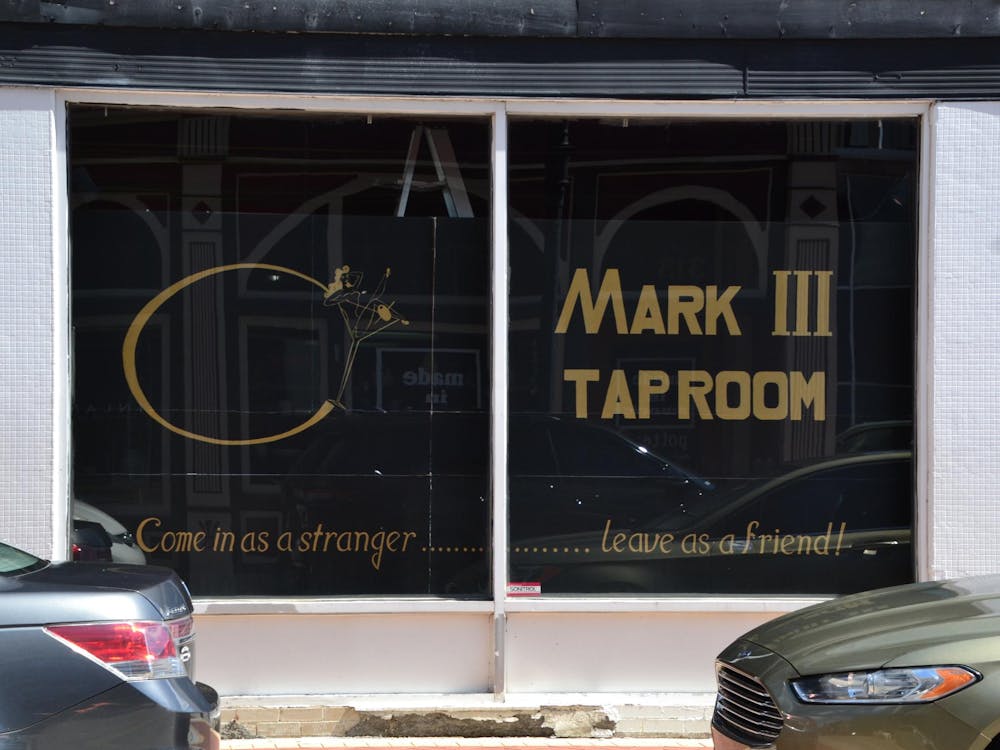The symbol of American freedom, the American Bald Eagle, hasn't always been present in every state it should be. The Indiana Department of Natural Resources (DNR) started an eagle reintroduction program in 1985 to bring that symbol to Indiana.
The program started with 73 eaglets from Alaska and Wisconsin, and, according to a 2020 study by the DNR, there are now 350 nesting territories in the Hoosier state.
“The bald eagle, as well as other species such as peregrine falcons, have had a huge comeback due to a combination of factors,” Doll said. “That includes the banning of DDT [dichloro-diphenyl-trichloroethane] and breeding and reintroduction programs led by wildlife biologists and agencies like the DNR.”
Doll has been the president of Ball State’s Wildlife Society for about a year.
When it comes to habitat management, Land Manager and Restoration Ecologist John Taylor has played a big part in restoring habitats.
“Habitat protection and restoration are the best ways to maintain the biodiversity we still have,” he said. “Creating more habitat is necessary if we want to expand and protect their populations.”
Taylor has helped Ball State students build wetlands, or land consisting of marshes or swamps, in the past, but he believes bigger groups have done a lot for the state's endangered wildlife. One way is something called a land trust. This is a community based organization that tries to preserve land for wildlife. One of the best examples is the Red-tail Land Conservancy.

But bald eagles are not the only genus popping up. In the 1990s, river otters were added to the state’s endangered list, but after a similar reintroduction process, the furry mammal was taken off of the list in 2005.
Bradford Westrich, DNR mammalogist since 2018, said the success of reintroducing otters was due to “state stakeholders [having] a vested interest [the] species coming back.”
“So hunters and trappers were eager to see that species come back and be at a level that they could recreationally harvest,” Westrich said. “There were a lot of non-consumptive users who were very excited to see river otters come back to the [United] States, so they can have the opportunity to just see them out in the wild.”
Westrich works with and manages animals people don’t usually hunt, such as bats and badgers.
With the success regarding bald eagles and river otters, what else could be introduced? Wolves used to inhabit Indiana but would they be able to thrive?
With wolves, Doll believes yes and no.
“To keep it simple, not all species have an equal impact on their environment,” he said. “As much as we'd like to save every species, there is limited funding and time. So we prioritize species on the brink of extinction and those that have the greatest impact on their ecosystems, which in turn usually benefits other species.”
For example, in 1995, a number of gray wolves were released in Yellowstone National Park. That has allowed biologists to learn and understand how wolves affect their ecosystem.
But there is another element to this: the public's support.
“Government agencies, such as DNR, are managing different stakeholder groups in the community,” Doll said. “So if they don't have the support of those groups, then they can't do anything.”

As alluded to earlier, wolves once thrived in Indiana, but according to the DNR, wolves were all but gone by 1908. Another issue with the wolf idea is that one of their biggest jobs is to hunt.
“Humans pretty much fill the role that is seen right now, hunting deer and stuff,” Doll said. “And a lot of our [Indiana wildlife programs] funding comes from deer hunting … But other things that they usually hunt, like large herbivores, … they're not really around here.”
There is also another issue with bringing wolves back to Indiana.
“Indiana's habitats have just changed so much over the past 200 years,” Westrich said. “Bringing back one of those species that requires a lot of room to roam, and they have certain habitat requirements that just aren't here anymore; we would just be putting those species at a lot of risk in terms of vehicle collisions or causing harm to someone's crops. [It would] essentially just be causing more problems than bringing that animal back.”
The DNR is already working on another species: a mammal on the state’s endangered list.
The Allegheny woodrat is a species that occurs in a 40 mile stretch of cliffline that follows the Ohio River. Westrich and the DNR has been working with the Ohio DNR, the New Jersey and Pennsylvania game commissions, and zoos to provide breeder rats to start the project.
Westrich explained Indiana residents can help with deciding their future projects by going to the DNR’s website and filling out surveys about wildlife. One example is a “report a mammal webpage,”which could help the organization with research.
But for those wanting to know ways they can help wildlife independently, Westrich believes that is just as important. Things like planting native plants and removing invasive species can improve the ecosystem. Another way is to restore property to its original form.
Contact Zach Carter with comments at zachary.carter@bsu.edu or on Twitter @ZachCarter85.





